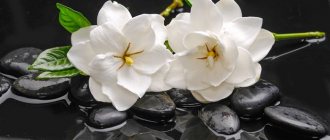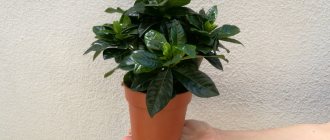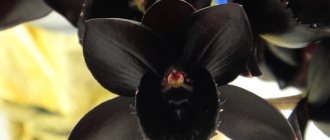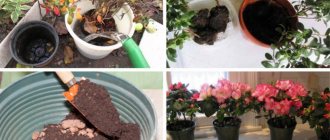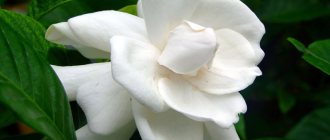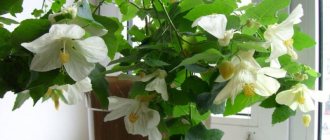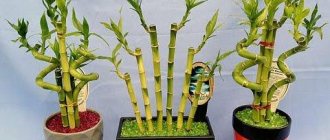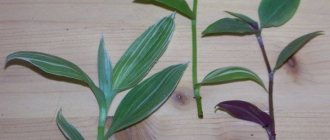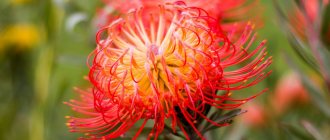This fragrant tropical flower has a not very good reputation as a capricious and difficult plant to grow at home. Gardenia is really not easy to plant and care for, and a small inaccuracy in agricultural technology can easily negate all the efforts expended. However, if you approach the issue and select a variety wisely, you can significantly simplify this task and achieve your goal. And considering the exquisite appearance and stunning jasmine aroma of the flower, which has long been valued and used in the manufacture of cosmetics and perfumes, it is worth it. And, of course, it is also important to learn “on the shore” how to care for the capricious gardenia at home and achieve its favor.
general description
In the wild, gardenia is an evergreen shrub that can sometimes take a tree-like form. Belongs to the Marenov family. It grows in tropical and subtropical forests of China, India, Indonesia, and is found in Japan. It is a compact bush with a smooth stem and short branches with leathery, shiny leaves of rich green color.
Flowering is long-lasting, beginning in mid-summer and ending in October. With proper planting and proper care during this period, its shoots are completely strewn with numerous flowers in varying degrees of budding. Outwardly, they are similar to roses; they are not inferior to the queen of flowers in terms of their delicate, pleasant aroma. The elegance of appearance allows gardenia to be used in interior design of a wide variety of styles.
The closest relative of this tropical flower is coffee.
Transplanting, watering and fertilizing a flower
Transfer
An overgrown flower should be replanted in February or early March, having prepared the soil in advance. As a rule, a plant should be replanted no earlier than after two years of growth and only after it has flowered. Replanting is stressful for the flower; it can shed its buds.
We install good drainage from small pebbles into the pot prepared for transplantation; some gardeners use large pieces of polystyrene foam. The soil prepared for planting should not contain lime impurities. The ideal option is to purchase a ready-made soil mixture, which is sold in flower shops or gardening associations. By choosing the appropriate composition, you can buy soil for azaleas, which is a little similar to gardenia in care and a corresponding oxidized mixture of soil.
When mixing the soil for the plant yourself, we take the following proportions: soil from under pine needles, leaf and peat soil is combined with an equal share of sifted, clean sand.
Top dressing
When the plant is in the active growth phase, from approximately March - April to August, fertilizing with liquid fertilizers is carried out for indoor plants that bloom intensively and profusely. Fertilize after a couple of weeks, observing a reduced dosage than that specified in the recommended instructions.
Planting and care
Features of planting is the need to cut shoots by one third of the entire length. Propagation by stem cuttings cut from the mother plant in the spring is the best way to get a new gardenia bush.
The plant loves moist air and needs constant moisture. Spraying the gardenia daily and placing it in a tray filled with pebbles and water will provide a pleasant microclimate reminiscent of its natural habitat. Windows directed to the west and east are excellent for comfortable growth and flowering of gardenia; south windows are suitable for winter. The most important thing in caring for a capricious beauty is the correct temperature. In summer, the temperature should not be lower than 21-22 degrees Celsius, in winter about 18-19. The presence of a falling shadow from trees growing in the yard is highly undesirable.
Types of gardenia with photos
Botanists describe about 250 varieties, among which the most suitable for home cultivation is jasmine gardenia (Gardenia jasminoides), native to the southern provinces of China. The second, almost unused name of the variety is Gardenia Augusta. Its double inflorescences resemble camellia. They are also trying to grow the African variety of gardenia thunbergia (Gardenia thunbergia), which is distinguished by single inflorescences, at home. You should know that the second variety is more whimsical. In addition, knowledge of how to care for gardenia is not enough without meeting a number of subjective conditions (for example, the absence of windows of the desired orientation or their shading by trees).
As a result of long cultivation of the jasmine variety, many varieties have appeared, of which the most popular and suitable for growing in rooms and greenhouses can be identified.
- Beauty is a tall variety with large double waxy flowers that bloom throughout the summer season and until the last days of October. In greenhouses it can reach 2 meters in height.
- Chuck Hkys is a semi-double, very fragrant variety with ivory-colored flowers. Summer flowering, quite short. It is characterized by increased resistance to cold.
- Amy - stands out for its lighter foliage color. The flowers are double and have an almost ideal shape, which makes them look like artificial ones. Highly valued for its ability to bloom twice a year.
- Mystery is a tall, large-flowered variety with very dark-colored leaves. Terry inflorescences have a flat shape, up to 13 cm in diameter. Forms a very strong bush with a tendency to grow vertically. It can also bloom a second time.
- Belmond is large-flowered and densely doubled, has a high tolerance to low temperatures and diseases. The diameter of the inflorescences with a stunning aroma reaches 10 cm.
- Variegata is a slow-growing compact shrub with rounded, variegated leaves that range from green to light beige. A good option for pot growing at home.
- Radicans is a dwarf variety that is ideal for bonsai. The width of the crown exceeds its height. The leaves are small, leathery, with a waxy sheen, the flowers are double and medium-sized. Flowering occurs later than other varieties of jasmine gardenia.
- Radican Variegata is a variety bred on the basis of the previous one with more developed characteristics. Growing extremely slowly, making it an excellent candidate for bonsai, the green leaves have a light cream stripe along the edge. Flowering is late, short, in summer.
- Golden Magic - the white corollas of the inflorescences have a characteristic transition to a golden yellow color. Blooms spectacularly and for a long time.
Description and benefits of indoor jasmine gardenia
In the wild, jasmine gardenia can reach two meters in height. Indoor flowers are compact in size, and the maximum height of the bush varies within 50 cm. In regions with warm climates, some gardeners practice growing gardenia in open ground, but the heat-loving plant is best kept indoors.
In the photo you can see that the gardenia resembles a small shrub, which is densely covered with dark green foliage.
During the flowering phase, lush white flowers with a pleasant jasmine scent bloom against the background of green mass. The flower is also pleased with the duration of its flowering, which lasts from mid-summer until October.
Gardenia with snow-white buds is considered a family plant that brings peace, good luck to the house and creates a cozy atmosphere. The teachings of Feng Shui claim that a flower can not only purify the air, but also have a positive effect on the energy of the home. Thanks to this, close people argue less and overcome difficulties together. Housewives prefer to place a pot of gardenia in the kitchen, because it is believed that it helps improve culinary skills.
You may be interested in:
How to care for the Decembrist flower? Decembrist is a beautiful and amazing flower that blooms in frosty winters. Therefore, if you want to do...Read more...
It is quite difficult to achieve flowering. If the plant pleases with abundant flowering, this is a sure sign of the onset of wonderful changes in the life of the owner. They say that placing a flowerpot is useful not only in the kitchen, but also in the children's room. The presence of a flower helps a child cope with difficulties and protects against negative energy. There is an opinion that gardenia can protect household members even from the evil eye.
Features of purchasing gardenia
Despite the increased demands of the flower for warmth, it is currently possible to buy it all year round, although this is certainly more difficult to do in winter. The copies sold have a clear division into “classes” according to the category of their cost among manufacturers. The most expensive specimens are offered for sale in the bud stage, which requires help to open. This should be done under a warm, but not hot shower.
Moving a gardenia into a house (or any other place) is much more stressful for it than for many other plants, so many specimens die at this stage. According to flower growers, drugs such as Epin, Zircon or HB101 can help her survive stress. The dosage and frequency must be followed according to the attached instructions.
In expensive specimens, the inner petals are often carefully sealed with wax, which requires the same careful removal. The buds may have supporting collars of leaves on top. Cheaper varieties (or producers) usually have smaller and more open buds, and they often have plastic collars on them.
When buying a gardenia as a gift, you should think very carefully about whether the recipient can handle this flower and provide it with the care it needs. Otherwise, the gift will only leave you disappointed.
Pest and disease control, treatment methods
Thrips - can harm the plant; if detected, the plant should be treated with insecticides
While enjoying the sophistication and beauty of an amazing flower, regularly inspect the flower for plant pests. The danger comes from scale insects, spider mites, mealybugs thrips and aphids often attack . For prevention and pest control, insecticides are used. Suitable drugs include:
- decis;
- intavir;
- confidor;
- fitoverm;
- polytox.
If the source of damage is small, one treatment is sufficient. If pests overwhelm the plant, several sprayings will be required at intervals of seven to ten days. Usually three treatments are enough, but to avoid relapses, preventive treatment is done every six months. Before using a toxic drug, take precautions; it is a good idea to read the instructions for use to calculate the correct dosage. In some cases, pests multiply not on gardenia, but on neighboring flower pots; in this case, all inhabitants of the window sill should be treated at the same time.
Caring for gardenia indoors
Each point of the requirements for agricultural technology is important in this case and requires strict implementation.
Lighting
The flower loves full light throughout the day, but does not react well to direct midday rays. The ideal location would be a very bright but not hot location on a window facing west or southwest, with thin tracing paper pasted on it to protect from direct sun at midday. In winter, the tracing paper can be removed. The window should not be shaded by trees growing behind it.
Gardenia is extremely sensitive not only to the intensity of light, but also to its direction. During the period of budding and flowering, it can not only be moved to another place, but even rotated relative to the light source. The buds may fall off.
Temperature
A flower's love for warmth does not mean that it needs to be kept in a hot room. There is a certain range of comfort, which directly depends on the time of year and the stage of vegetative development. In the spring-summer period, the optimal temperature lies within +20...+24C. In winter it should be gradually reduced by 4-5C relative to summer. The minimum temperature threshold is +16C. During the period of bud formation it rises to +18…+20С. Whatever the layout, the roots should never be in cold soil (colder than the air in the room). Sharp fluctuations in temperature readings are especially dangerous for crops. In winter, the plant experiences a lack of light, and cooler conditions can partly compensate for this.
Gardenia categorically does not tolerate drafts, reacting to them by shedding buds and buds. It is better to ventilate the room using forced ventilation directed in the other direction.
Air humidity
High and uniform air humidity is one of the conditions for the successful development and flowering of a plant. It places especially high demands on humidity during the period of bud formation. In dry air, the process may stop developing, and the buds that have begun to form may fall off. A tray filled with sphagnum moss or moistened expanded clay will help solve the problem, but the flower pot itself should not touch the bottom. Regular spraying of foliage is recommended, however, water should not get on flowers or unopened buds (unsightly spots may appear).
Watering
For irrigation, you should use warm and soft water, preferably settled, boiled or filtered. In summer, watering should be constant to keep the soil moderately moist. Overfilling is highly undesirable. The plant loves a warm shower, but at this time you need to close the earthen ball. In the winter season, watering is reduced to moderate, but the earthen ball should never be overdried.
Top dressing
Additional nutrition should be provided during the period of active growing and flowering, in spring and summer (1-2 times monthly). Use liquid complex fertilizers for flowering crops, but at half the dosage recommended in the instructions.
Trimming
The crop not only tolerates pruning well, but also needs it periodically. Trim the shoots after flowering ends, leaving half or a third of them. During the period of active growth, you can pinch the tops of non-flowering shoots to stimulate the growth of new ones.
Cut parts of the stems can be used as apical cuttings for propagation.
Secrets of choosing a plant in a flower shop
Before acquiring the desired exquisite and fragrant flower, you should carry out a thorough inspection before purchasing. It is better to choose a bush with a well-formed shape branched in different directions. If the plant initially seems sick or has pale, yellowed or limp leaves, do not rush into purchasing. A drooping plant with falling flowers will not bring joy or satisfaction from enjoying its aroma and appearance.
A healthy plant looks gorgeous and costs a lot, but saving money by buying a diseased plant, even at a significant discount, is not worth it. Remember, the miser pays twice. A gorgeous flower with proper care will delight you with an abundance of beautiful flowers. Filling the room with a delightful, pleasant scent reminiscent of jasmine.
What kind of soil does gardenia need?
Calcareous and alkaline soils are not suitable for it; high acidity levels from pH = 5 and slightly higher are needed. When replanting gardenia after purchase, you should try to preserve its soil lump as much as possible; for adding to it, it is recommended to buy a ready-made substrate for azaleas. It’s best not to experiment with making your own soil mixture to begin with. For later transplants, you can add a composition of equal parts of three types of soil (coniferous, turf, leaf) and quartz sand.
Planned transplant
The frequency of planned transplantation is usually two years. The new container should be 2 cm wider than the previous one. In order to replant the gardenia painlessly and correctly, you need to handle its root system as carefully as possible, preserving the earthen lump. This is done in early spring before the start of active growing season and the release of buds. During flowering, replanting is categorically not recommended and can only be justified by the threat of death. The flower will not only shed its buds, but may also die. Good drainage must be provided!
Four instead of one - we multiply
Gardenia can be propagated in two ways: cuttings and seeds. If you wish, you can increase the number of colors yourself.
Seeds
Seeds are viable for 2-3 days. Before sowing, they are treated with aloe juice or zirconium preparation. Sow in moist soil, compact, sprinkle with sifted soil.
After this, the containers with seeds are covered and placed in a warm, damp place. When germinating seeds, it is necessary to remove the film and ventilate daily . Shoots appear two months after planting.
Cuttings
Cuttings suitable for propagation must be strong and healthy . You can use the branches after the next pruning of the bush.
The size of the planting material is eight to ten centimeters. The branches are treated with potassium permanganate and planted in prepared light soil.
In the video you will see how to do it correctly:
The earth is watered with warm water and covered with film. The optimal temperature for rooting shoots is 25°C.
Important! The cuttings will take root faster if you give them a steam bath every day, heating the container over hot water.
Established plants are replanted, the tops are pinched, and proper care is provided.
Reproduction
As a result of planned pruning, excellent material remains for vegetative propagation - apical cuttings. They should be about 10 cm long. For their rooting, use a warm nutrient substrate (see above) and any root formation stimulator. Setting up a mini-greenhouse using a jar or transparent bag will speed up the process. It is acceptable to keep the cuttings in water, but in this case they may not produce roots. After the cutting has doubled in height, it is pinched. You need to be prepared for the fact that the process will be lengthy and not always successful.
How to propagate and replant Gardenia Augusta
Like any indoor plant, gardenia needs periodic replacement of the soil and flowerpot. It is worth considering that the flower is no less picky about the composition of the soil than it is about basic care.
Transfer
For the first few years, young gardenias are replanted every spring. It is recommended to replant mature flowers once every two years. When transplanting adult flowers, it is necessary to partially prune the root system. It is advisable to carry out the procedure in spring or after the end of the flowering phase.
The transplant procedure is as follows:
- Carefully remove the jasmine gardenia from the container, carefully inspect the root system, cutting off damaged or dry roots.
Inspection of the root system - The flower is placed in the center of a new flowerpot, previously filled with a layer of high-quality drainage, and the voids are filled with substrate. The filler for the flowerpot should consist of peat, turf, coniferous soil and sand.
- The container with the flower is shaken to evenly distribute the soil, then soil is added, compacted a little and watered.
After transplantation, the pot is placed in a permanent place, protected from scorching rays. This procedure is extremely stressful, so if the leaves fall, there is no need to worry. The adaptation period after the transplant procedure is three weeks.
Reproduction
The crop can be propagated in two ways: vegetative and seed, but both methods are quite complex, because the flower is difficult to take root. When choosing the seed method, it is important to pay special attention to the freshness of the planting material. You can purchase seeds at the floristry department or collect them yourself. Care should be taken when handling the seeds, as they are poisonous. The seed method is more suitable for experienced gardeners, as it requires certain skills.
Cuttings are much more popular. To propagate gardenia using cuttings, you need to familiarize yourself with the procedure algorithm:
- healthy cuttings are cut from the top of the bush, the length of which should be about 10 cm;
Gardenia cuttings - peat and river sand are poured into a container with drainage holes in equal proportions;
- the cuttings are placed in a weak solution of potassium permanganate, after which the cut site is treated with a growth stimulator;
- the cuttings are buried in the soil mixture and insulated with glass or polyethylene;
Warming cuttings - The container is transferred to a warm place with a temperature within 25˚C.
Planting material should be ventilated daily and the soil should be kept moderately moist.
Possible problems
- Very slow development, lack of flowering, pale foliage. The flower lacks nutrition and light.
- Gardenia leaves turn yellow or become covered with yellow spots. There is not enough soil acidity, the soil needs to be acidified.
- The flower droops, loses its buds, and the leaves become limp. It is necessary to check the temperature; most likely, it is below normal.
- Leaves fall, sometimes remaining green. Cold irrigation water, lack of moisture.
- The gardenia is drying up. Various unfavorable factors may occur, the most common being dry air and lack of moisture.
- Reset of buds and flowers. Drafts or moving the pot from place to place, sudden changes in lighting intensity.
How to fertilize gardenia
Fertilizer allows you to replenish a number of useful substances necessary for the growth and development of the flower. If the gardenia is still very young, use mineral or organic fertilizers (such fertilizers must be applied every two weeks). When growing an adult flower, it is best to use fertilizers that do not contain calcium. Gardenias need to be fed with this fertilizer every week. If it happens that the gardenia leaves begin to turn yellow, you can make a weak solution of iron sulfate. It will restore the plant and prevent yellowing of other leaves.

